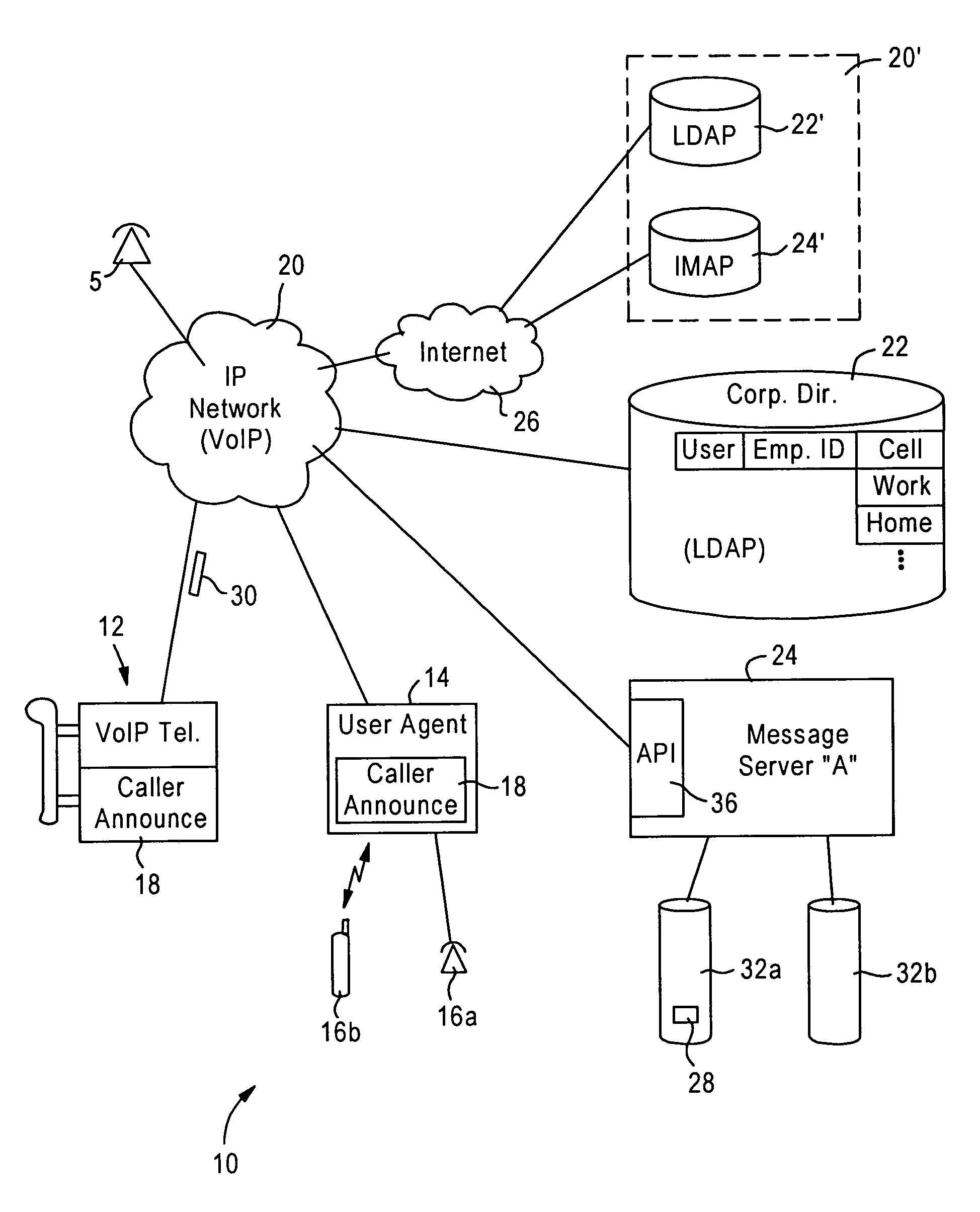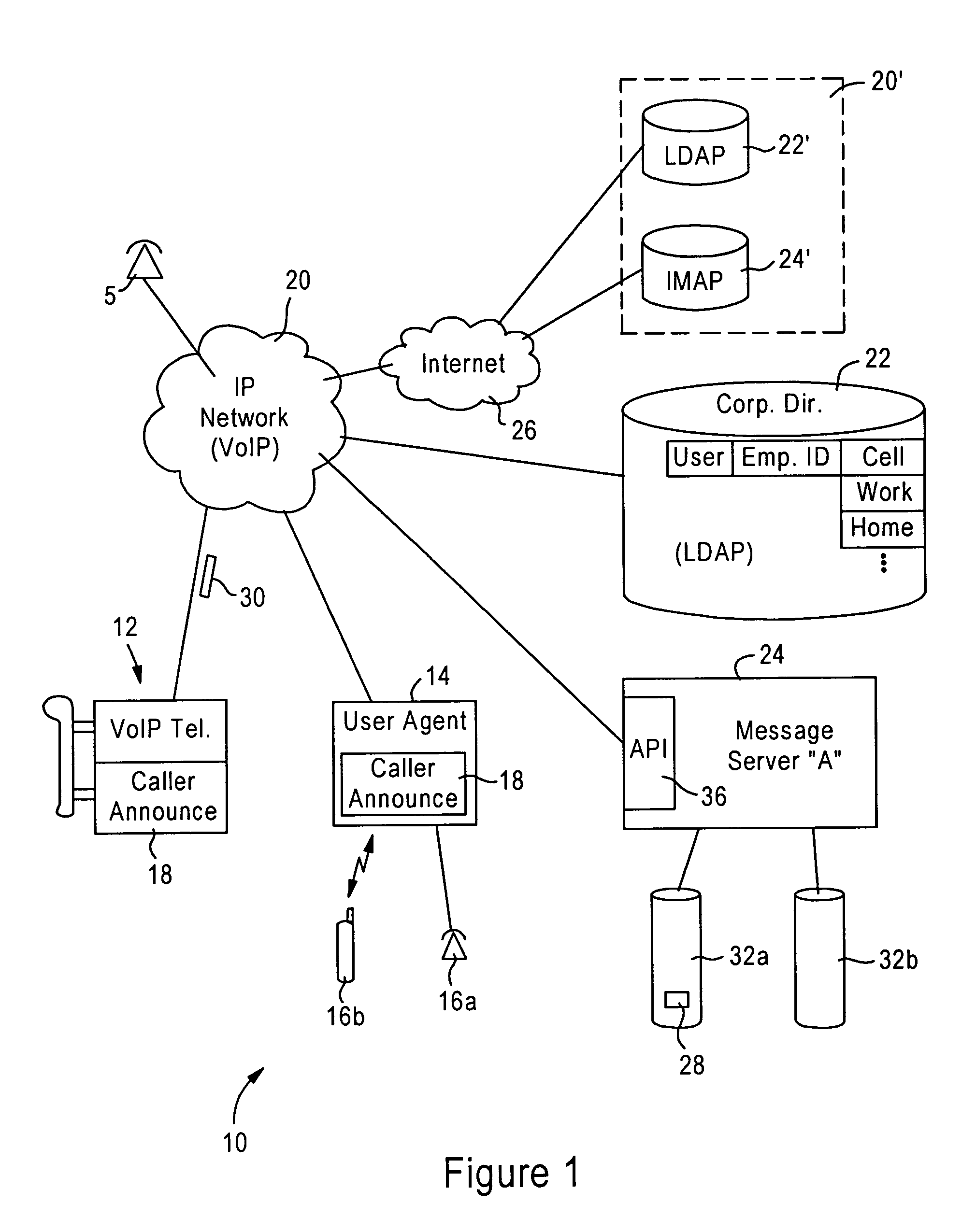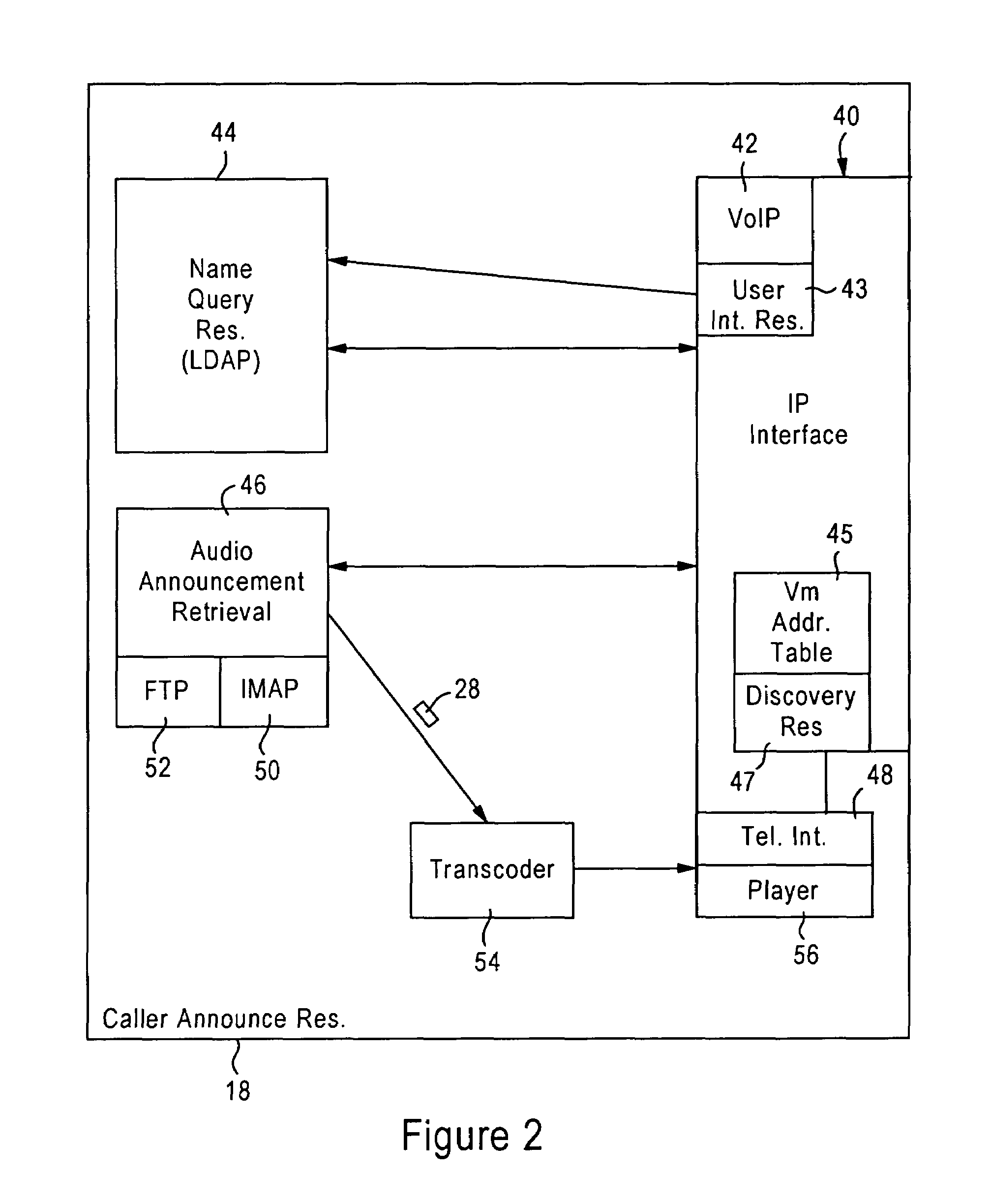Arrangement for retrieving recorded audio announcements from a messaging system for identification of a calling party
- Summary
- Abstract
- Description
- Claims
- Application Information
AI Technical Summary
Benefits of technology
Problems solved by technology
Method used
Image
Examples
Embodiment Construction
[0022]FIG. 1 is a block diagram illustrating a system 10 for announcing a calling party 5 based on retrieval of a recorded audio announcement that audibly identifies the calling party, according to an embodiment of the present invention. The system includes a network-enabled subscriber endpoint device, for example a Voice over IP telephony device 12 or a user agent device 14. The user agent device 14 is configured for performing IP-based operations as described herein for a telephony device (e.g., an analog telephone 16a or a cellphone 16b) that lacks the IP-based resources 18 as described below with respect to FIG. 2; alternately, the user agent device 14, implemented for example within a call server, can be used to centralize processing operations and reduce processing requirements for VoIP telephony devices. The VoIP telephony device 12 and the call server 14 are configured for executing Voice over IP call processing applications according to a prescribed Voice over IP protocol, ...
PUM
 Login to View More
Login to View More Abstract
Description
Claims
Application Information
 Login to View More
Login to View More - R&D
- Intellectual Property
- Life Sciences
- Materials
- Tech Scout
- Unparalleled Data Quality
- Higher Quality Content
- 60% Fewer Hallucinations
Browse by: Latest US Patents, China's latest patents, Technical Efficacy Thesaurus, Application Domain, Technology Topic, Popular Technical Reports.
© 2025 PatSnap. All rights reserved.Legal|Privacy policy|Modern Slavery Act Transparency Statement|Sitemap|About US| Contact US: help@patsnap.com



